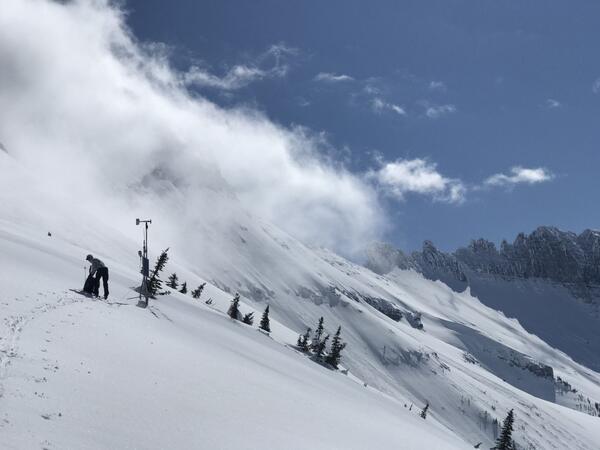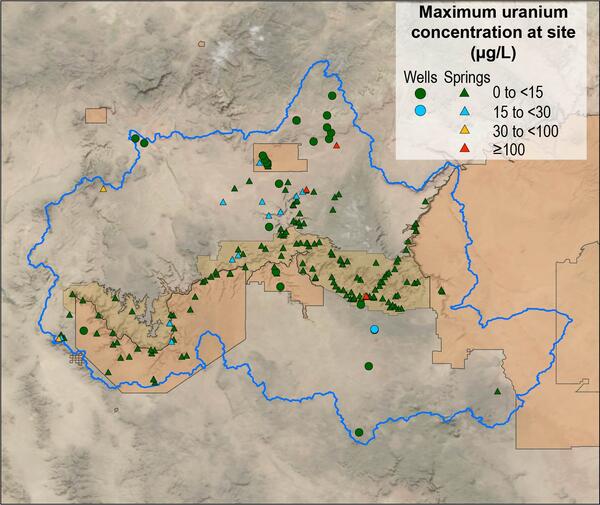This image is the report cover from a USGS Report Circular 1490.
Images
See our science through the images below.

This image is the report cover from a USGS Report Circular 1490.

Graphic showing potential benefits of RestoreNet 2.0 treatments, including seeding, live topsoil inoculation, livestock grazing, seed balls, and soil pits
linkGraphic showing potential benefits of RestoreNet 2.0 treatments, including seeding, live topsoil inoculation, livestock grazing, seed balls, and soil pits
Graphic showing potential benefits of RestoreNet 2.0 treatments, including seeding, live topsoil inoculation, livestock grazing, seed balls, and soil pits
linkGraphic showing potential benefits of RestoreNet 2.0 treatments, including seeding, live topsoil inoculation, livestock grazing, seed balls, and soil pits

The USGS Ecosystems Mission Area (EMA) is encouraging participatory science with its partners. EMA is a leader in participatory science activities and this guidance emphasizes support for this research design model that encourages research projects, as appropriate, to engage in enhanced forms of participatory science.
The USGS Ecosystems Mission Area (EMA) is encouraging participatory science with its partners. EMA is a leader in participatory science activities and this guidance emphasizes support for this research design model that encourages research projects, as appropriate, to engage in enhanced forms of participatory science.
This image shows a male bighorn sheep with large horns.
This image shows a male bighorn sheep with large horns.
Male (ram - left) and female (ewe) bighorn sheep outside of Yellowstone National Park.
Male (ram - left) and female (ewe) bighorn sheep outside of Yellowstone National Park.

Argentine black and white tegus (Salvator merianae) can survive the winter under semi-natural conditions well beyond their current invasive range.
Argentine black and white tegus (Salvator merianae) can survive the winter under semi-natural conditions well beyond their current invasive range.
Outstanding in the Field Episode 11 Artwork with microphone and headset graphic overlaying image of brown bears in a river.
Outstanding in the Field Episode 11 Artwork with microphone and headset graphic overlaying image of brown bears in a river.

Bee nesting block with included image insert showing nesting hole occupied by a bee.
Bee nesting block with included image insert showing nesting hole occupied by a bee.

Amy Vandergast (left) and Julia Smith (right) pose next to a rail crossing sign in Ventura County.
Amy Vandergast (left) and Julia Smith (right) pose next to a rail crossing sign in Ventura County.

RestoreNet treatments include soil pits and connectivity modifiers (ConMods), seen here at a RestoreNet site in the Sonoran Desert.
RestoreNet treatments include soil pits and connectivity modifiers (ConMods), seen here at a RestoreNet site in the Sonoran Desert.

Nikola Rodriguez exits the water after a successful sampling effort along the west coast of Hawai’i Island
linkNikola Rodriguez exits the water after a successful sampling effort along the west coast of Hawai’i Island in September 2021. The fish will be processed and tested for the presence of ciguatoxins.
Nikola Rodriguez exits the water after a successful sampling effort along the west coast of Hawai’i Island
linkNikola Rodriguez exits the water after a successful sampling effort along the west coast of Hawai’i Island in September 2021. The fish will be processed and tested for the presence of ciguatoxins.

Northern Rocky Mountain Science Center scientist Zachary Miller conducting routine maintenance on the Garden Wall Weather Station at Glacier National Park, Montana (elevation: 7,400 feet)
Northern Rocky Mountain Science Center scientist Zachary Miller conducting routine maintenance on the Garden Wall Weather Station at Glacier National Park, Montana (elevation: 7,400 feet)
Mesopredators play important ecological roles in most systems. This group of wildlife is often well-adapted to human development and their densities can vary according to the human-subsidized resources with trickle down effects on other animals.
Mesopredators play important ecological roles in most systems. This group of wildlife is often well-adapted to human development and their densities can vary according to the human-subsidized resources with trickle down effects on other animals.
This Picarro L2130-i Isotope and Gas Concentration Analyzer is housed at the USGS St. Petersburg Coastal and Marine Science Center.
This Picarro L2130-i Isotope and Gas Concentration Analyzer is housed at the USGS St. Petersburg Coastal and Marine Science Center.
This bald eagle was admitted to The Raptor Center in St. Paul, MN where it was determined by veterinarians to be poisoned by lead. The bowed head, drooped wings, and green stained tail feathers are all typical signs of lead poisoning of raptors.
This bald eagle was admitted to The Raptor Center in St. Paul, MN where it was determined by veterinarians to be poisoned by lead. The bowed head, drooped wings, and green stained tail feathers are all typical signs of lead poisoning of raptors.

Little is understood about the behavior, location, and habitat preferences of juvenile Gulf sturgeon. To learn more about this prehistoric fish, the Florida Cooperative Fish and Wildlife Research Unit at the University of Florida, the National Oceanic and Atmospheric Administration, and the U.S.
Little is understood about the behavior, location, and habitat preferences of juvenile Gulf sturgeon. To learn more about this prehistoric fish, the Florida Cooperative Fish and Wildlife Research Unit at the University of Florida, the National Oceanic and Atmospheric Administration, and the U.S.

implant transmitter into Smallmouth Bass-Redeye Bass hybrid to identify habitat use and movement patterns of select fish in an Arizona canyon.
linkArizona Coop Unit Graduate Student Kaitlyn Gahl (sitting) and University of Arizona Undergraduate student Elizabeth EbadiRad implant transmitter into Smallmouth Bass-Redeye Bass hybrid to identify habitat use and movement patterns of select fish in an Arizona canyon.
implant transmitter into Smallmouth Bass-Redeye Bass hybrid to identify habitat use and movement patterns of select fish in an Arizona canyon.
linkArizona Coop Unit Graduate Student Kaitlyn Gahl (sitting) and University of Arizona Undergraduate student Elizabeth EbadiRad implant transmitter into Smallmouth Bass-Redeye Bass hybrid to identify habitat use and movement patterns of select fish in an Arizona canyon.

Holding a Northern Pike captured from an Arizona Lake is Dr. Yuliya Kuzmenko. She and Dr. Timofy Specivy, both scientists from the Ukraine, were hired by the Arizona Cooperative Fish and Wildlife Research Unit to work on a collaborative project with the Arizona Game and Fish Department to remove nuisance pike populations from select Arizona lakes.
Holding a Northern Pike captured from an Arizona Lake is Dr. Yuliya Kuzmenko. She and Dr. Timofy Specivy, both scientists from the Ukraine, were hired by the Arizona Cooperative Fish and Wildlife Research Unit to work on a collaborative project with the Arizona Game and Fish Department to remove nuisance pike populations from select Arizona lakes.
This is an image of the coloring page for the Disease Ecologist I Am A... episode.
This is an image of the coloring page for the Disease Ecologist I Am A... episode.

Map of maximum uranium concentration at 206 spring and well sites in the Grand Canyon region.
Map of maximum uranium concentration at 206 spring and well sites in the Grand Canyon region.
Triple-high mist net in front of Half Dome. The net is used to capture bats as part of a study tracking bat movements in Yosemite National Park.
Triple-high mist net in front of Half Dome. The net is used to capture bats as part of a study tracking bat movements in Yosemite National Park.









